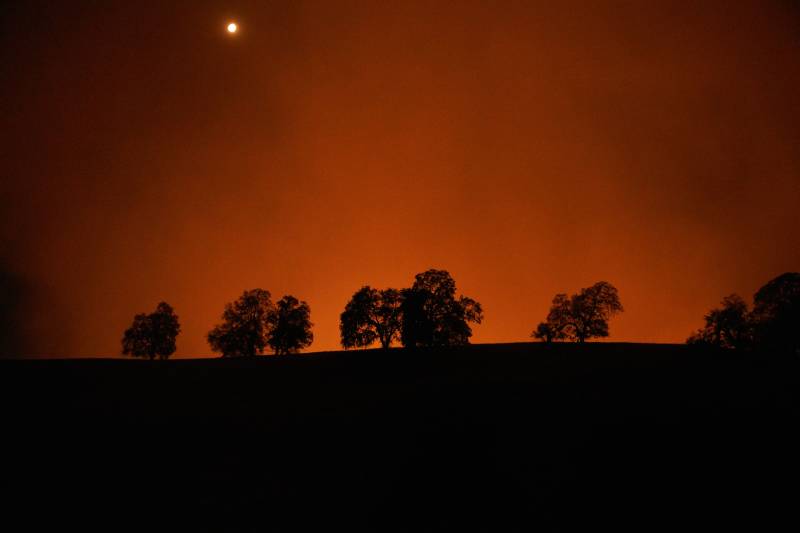PG&E disclosed Friday that Cal Fire is investigating whether the company’s equipment was involved in starting a Northern California wildfire that killed four people late last month.
The news comes just three months after the state's largest utility emerged from federal bankruptcy protection — a legal refuge it sought because it faced an estimated $30 billion in liabilities arising from wildfires sparked by its equipment. Those fires killed more than 100 people — including 85 in and around the Butte County town of Paradise — and destroyed more than 15,000 homes.
In reports filed with the California Public Utilities Commission and the federal Securities and Exchange Commission on Friday, PG&E said a line in a remote area of Shasta County experienced a series of still-unexplained problems on the afternoon of Sept. 27.
The company said it hasn’t yet determined the nature of the problems, which included alarms from a SmartMeter and other automated equipment and occurred about the same time as the Zogg Fire broke out 10 miles southwest of Redding.
In its submission to the SEC, the utility said that Cal Fire investigators on Friday took possession of PG&E equipment in the area where the fire is believe to have started.
The company said the area, near the intersection of Zogg Mine Road and Jenny Bird Lane where the fire broke out, is served by its 12,000-volt Girvan 1101 distribution circuit. It offered this brief narrative of the sequence of events:
"According to PG&E’s records, on September 27, 2020, a PG&E SmartMeter and a line recloser serving that area reported alarms and other activity between approximately 2:40 p.m. and 3:06 p.m., when the line recloser de-energized that portion of the circuit. The data currently available to PG&E do not establish the causes of the activity on the Girvan 1101 circuit or the locations of these causes.
On October 9, 2020, Cal Fire informed PG&E that they had taken possession of PG&E equipment as part of Cal Fire’s ongoing investigation into the cause of the Zogg Fire and allowed PG&E access to the area. PG&E does not have access to any evidence collected by Cal Fire. Cal Fire has not issued a determination as to cause. PG&E is cooperating with CAL FIRE in its investigation.”
The four people who died in the incident were apparently overtaken by rapidly advancing, wind-driven flames in the first hours of the blaze.
The fire started during a period when PG&E had shut off power to areas in Shasta and 15 other counties considered to be at a high risk of wildfire during a period of gusty winds and very low humidity.
The company reported it had blacked out about 65,000 customers in its service area, including some 2,800 in Shasta County. The shutoffs apparently did not include the circuit now under scrutiny by Cal Fire investigators.
Cal Fire spokesman Scott McLean declined comment.

